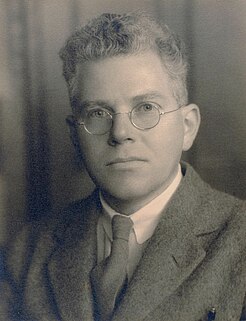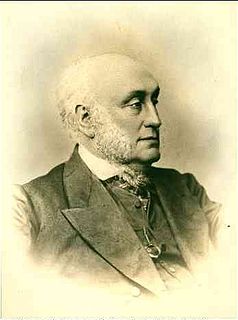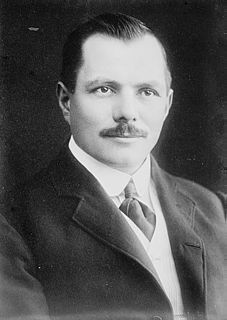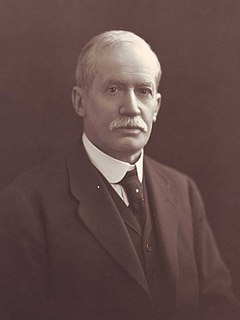Related Research Articles

Sir Marcus Laurence Elwin "Mark" Oliphant, was an Australian physicist and humanitarian who played an important role in the first experimental demonstration of nuclear fusion and in the development of nuclear weapons.

The Advertiser is a daily tabloid format newspaper published in the city of Adelaide, South Australia. First published as a broadsheet named The South Australian Advertiser on 12 July 1858, it is currently a tabloid printed from Monday to Saturday. The Advertiser came under the ownership of Keith Murdoch in the 1950s, and the full ownership of Rupert Murdoch in 1987. It is now a publication of News Corp Australia. Through much of the 20th century, The Advertiser was Adelaide's morning broadsheet, The News the afternoon tabloid, with The Sunday Mail covering weekend sport, and Messenger Newspapers community news. The head office was relocated from a former premises in King William Street, to a new News Corp office complex, known as Keith Murdoch House at 31 Waymouth Street.

Sir Eric James Neal, is a retired Australian businessman and public officer. He is a former Governor of South Australia (1996–2001), Commissioner of Sydney (1987–1988), and Chancellor of Flinders University (2002–2010).

Benjamin Boothby was a South Australian colonial judge, who was removed from office for misbehaviour, one of four Australian supreme court judges removed in the 19th century.
A. M. Bickford and Sons was one of the first manufacturing chemists in South Australia and until 1930 one of the State's most significant family owned companies. In 1930, they amalgamated with half a dozen other similar Australian companies to form "Drug Houses of Australia" (DHA), which very successfully continued to produce the "A. M. Bickford and Sons" products: the "drugs" and "chemicals" under the DHA brand; the cordials and soft drinks under the "A. M. Bickford and Sons" brand.

Hugh Donald "Huge Deal" McIntosh was an Australian show-business entrepreneur born to parents of Scottish and Irish origin and modest means in Sydney's Surry Hills, at that time a ramshackle suburb with a reputation for crime and vice among the largely Irish immigrant population. His policeman father Hugh Fraser McIntosh died when he was four.
Thomas Caterer was a pioneer schoolteacher of Adelaide, South Australia who founded in 1862 a private school for boys which in 1866 became Norwood Grammar School.
W. H. Burford and Sons was a soap and candle-making business founded in Adelaide in 1840 by William Henville Burford (1807–1895), an English butcher who arrived in the new colony in 1838. It was one of the earliest soapmakers in Australia, and up to the 1960s when it closed, the oldest. In 1878 he took his two sons Benjamin and William into partnership as W. H. Burford & Sons. Its expansion, accompanied by a number of takeovers, made it the dominant soap manufacturer in South Australia and Western Australia. Its founders were noted public figures in the young city of Adelaide.

Sir George Brookman KBE was a South Australian businessman who made a fortune from a gold discovery in Western Australia, and is remembered as a generous benefactor of the South Australian School of Mines and Industries and the University of Adelaide.
Frederic Britten Burden was a businessman and newspaper editor in the colony of South Australia.
Edward Gascoigne Collinson was a businessman and politician in the early days of the colonies of Western Australia and South Australia.
The Times and Northern Advertiser was a weekly newspaper published in Peterborough, South Australia from August 1887 to 1970.
William Mair was a politician in the British colony of South Australia.
Richard Alfred O'Connor was an Australian politician. He was a Liberal Union member of the South Australian House of Assembly from 1915 to 1921, representing the multi-member seat of Albert.
H. L. Vosz was an Adelaide, South Australia business, for a time Australia's largest supplier of paints and glass, the earliest progenitor of Dulux paints, and became the prosperous glass merchants A. E. Clarkson Ltd. The company was founded in a modest way by a painter, plumber and glazier of more than usual business acumen, who unwittingly became the name behind many of the stained glass windows in South Australian churches and public buildings.
The Adelaide Advertiser Tournament was a golf event played in Adelaide, Australia between 1948 and 1967. Up to 1960 the event was played in March or April but was later played in September or October. The venue generally alternated between Royal Adelaide Golf Club and Kooyonga Golf Club. Prize money was £500 from 1948 to 1952, £1,000 from 1953 to 1964, £1,500 in 1965 and A$3,000 in 1966 and 1967.
Douglas John Byard was proprietor and headmaster of Hahndorf College, South Australia.
Queen's College was a privately owned and run school for boys on Barton Terrace, North Adelaide. It ran continuously from 1891 to 1949, an Australian record for a proprietary boys' school.
Thomas Sadler Reed was a Civil Servant in the British colony of South Australia, and long-serving secretary of the State's branch of the Royal Geographical Society.
Alexander Stewart Cockburn was a South Australian journalist and author.
References
- ↑ "Views and Comments". The Advertiser (Adelaide) . South Australia. 19 May 1917. p. 11. Retrieved 4 April 2020– via Trove.
- ↑ "Research Scholarship". The News (Adelaide) . South Australia. 7 July 1927. p. 6. Retrieved 2 April 2020– via Trove.
- ↑ "Professor Oliphant's Brothers in Unique Local Industry". The Advertiser (Adelaide) . South Australia. 24 January 1947. p. 11. Retrieved 3 April 2020– via Trove.
- ↑ "Teacher is Now Glass Blower". The South Eastern Times . South Australia. 31 January 1947. p. 2. Retrieved 2 April 2020– via Trove.
- ↑ "Uranium hunt new weekend craze". The Mail (Adelaide) . South Australia. 5 June 1954. p. 65. Retrieved 3 April 2020– via Trove.
- ↑ "SA Man's Uranium Detector". The Advertiser (Adelaide) . South Australia. 6 June 1950. p. 3. Retrieved 4 April 2020– via Trove.
- ↑ "Demonstrated special lamp". The News (Adelaide) . South Australia. 14 August 1951. p. 7. Retrieved 4 April 2020– via Trove.
- ↑ "Ultra-Violet Sterilising Unit For Meat". The Advertiser (Adelaide) . South Australia. 21 January 1950. p. 3. Retrieved 4 April 2020– via Trove.
- ↑ "Adelaide's Edisons". Smith's Weekly . New South Wales, Australia. 21 January 1950. p. 6. Retrieved 3 April 2020– via Trove.
- ↑ "Ultra-Violet Lamps to Check Colds". The Advertiser (Adelaide) . South Australia. 25 March 1949. p. 7. Retrieved 2 April 2020– via Trove.
- ↑ "New Adel. Co". The News (Adelaide) . South Australia. 9 November 1950. p. 12. Retrieved 4 April 2020– via Trove.
- ↑ "New Cheaper Geiger Counter". Northern Standard . Northern Territory, Australia. 26 March 1953. p. 6. Retrieved 4 April 2020– via Trove.
- ↑ "Plant for building homes 'lying idle'". The News (Adelaide) . South Australia. 1 February 1949. p. 7. Retrieved 4 April 2020– via Trove.
- ↑ Sands & McDougall's Directory of South Australia. Sands & McDougall Ltd. 1962.
- ↑ "Family Notices". The Advertiser (Adelaide) . South Australia. 2 November 1901. p. 6. Retrieved 4 April 2020– via Trove.
- ↑ "Charging surfaces for xerography" . Retrieved 4 April 2020.one of many patent applications